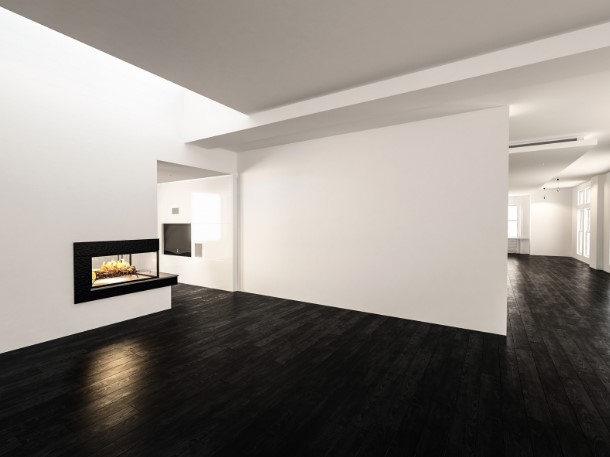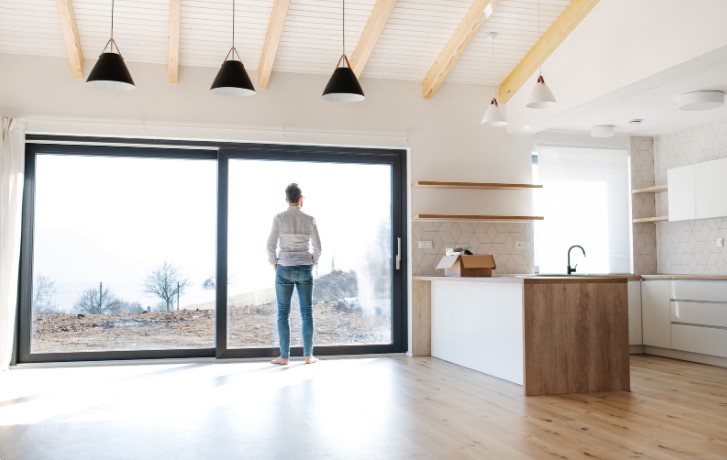The choice between indoor and outdoor tile goes far beyond simple aesthetics. Tile selection impacts durability, safety, comfort, and even property value. Whether redesigning a kitchen, updating a bathroom, or creating a welcoming patio, it’s essential to understand the performance requirements of tiles in various spaces. The materials, finishes, and installation techniques all differ, depending on where the tile is used. For homeowners exploring their options, the right guidance ensures a lasting investment. Working with an expert such as TAMPA BAY FLOORS outdoor tile installation contractor can make all the difference when planning outdoor living spaces, ensuring function and design align perfectly.
Material Differences Between Indoor and Outdoor Tile
Choosing the correct material is fundamental when selecting tile for any renovation project. Indoor tiles are generally designed for comfort, decorative appeal, and ease of maintenance. Porcelain and ceramic are most frequently used indoors, prized for their wide range of colors, patterns, and finishes. These materials have dense, non-porous surfaces that resist stains and moisture, making them ideal for kitchens, bathrooms, and entryways.
Outdoor tiles, however, must withstand harsher environments. Exposure to rain, sun, freeze-thaw cycles, and foot traffic demands tiles that are not only durable but also slip-resistant and weatherproof. Porcelain tiles are also a popular choice outdoors due to their low water absorption rate and resistance to temperature fluctuations. Natural stone, such as slate, travertine, and granite, is also favored for patios and pool decks because of its strength and textured surfaces. Concrete tiles offer further versatility and can be customized for modern or rustic outdoor designs.
The manufacturing process and the surface finish play significant roles in suitability. Indoor tiles often have smoother, glossier finishes, which are pleasant underfoot but may become slippery when wet. Outdoor tiles typically feature textured, matte, or rough finishes to provide traction and prevent accidents. Additionally, the thickness of outdoor tiles is generally greater to handle wear and load. Homeowners should always verify the slip rating (COF—Coefficient of Friction) and frost resistance when selecting tile for exterior applications.
Another factor to consider is UV resistance. Many outdoor tiles are made to retain their color and resist fading, even after years of exposure to sunlight. Indoor tiles, while durable, do not require the same high levels of UV protection. This attention to material properties ensures both safety and long-term beauty, inside and out.
Installation Techniques and Requirements for Indoor and Outdoor Tile
Installing tile is a precise task that varies greatly depending on location. Indoors, the subfloor must be clean, dry, and level to prevent cracking and uneven surfaces. Tile adhesive and grout are chosen according to the expected levels of moisture and wear; for example, bathrooms require waterproof grout to prevent mold and damage.
In contrast, outdoor tile installation introduces additional complexity. Substrates must be stable and able to handle freeze-thaw cycles without shifting or cracking tiles. Drainage is critical to prevent standing water, which can compromise both the tile and any underlying structures over time. Outdoor adhesives and mortars must also be rated for weather resistance, ensuring longevity in changing conditions.
Outdoor grout needs to be flexible and water-repellent. Expansion joints accommodate the movement caused by temperature changes, preventing unsightly cracks. For areas such as patios, pool decks, and walkways, tiles must be set with proper slope to allow rainwater runoff. Failure to adhere to these technical requirements often leads to premature deterioration or safety hazards.
Homeowners considering a project in Florida or similar climates must also account for high humidity, heavy rains, and intense sunlight. It’s not just about materials, but about choosing a tile system tailored to the environment. For new construction or renovations, the company TAMPA BAY FLOORS offers on its website tampabayfloors.us flooring services in Tampa that address both standard and unique installation needs, ensuring every project meets or exceeds local building codes.
Key installation differences:
- Indoor tilework emphasizes flatness, finish, and comfort.
- Outdoor tile projects prioritize stability, drainage, and non-slip surfaces.
- Specialized adhesives, grouts, and membranes must be used according to location and climate.
- Professional installation guarantees both aesthetics and performance, particularly when integrating tile into landscaping or water features.

Moisture Management and Waterproofing for Lasting Results
Moisture is one of the most significant challenges in both indoor and outdoor tile installations. Bathrooms, showers, and kitchens are notorious for spills and humidity, while outdoor tiles must contend with rain, pool water, and ground moisture.
In high-moisture indoor areas, waterproof membranes are mandatory. These barriers protect subfloors and walls from leaks, preventing mold, mildew, and structural damage. Membrane selection depends on the type of tile, substrate, and local regulations, but skipping this step can lead to expensive repairs down the road.
Outdoor spaces demand an even more robust approach. Proper grading and waterproofing membranes are combined with drainage solutions to keep surfaces dry and slip-resistant. Sealing natural stone is also essential to prevent water penetration and staining.
Professional waterproofing includes several steps:
- Assessing potential water exposure points and sources.
- Selecting and installing vapor barriers and waterproof membranes.
- Using water-resistant adhesives and grouts.
- Inspecting and maintaining seals to prevent deterioration.
- Regularly cleaning to remove debris and buildup that could trap moisture.
For upgraded shower or wet area protection the company TAMPA BAY FLOORS provides https://www.tampabayfloors.us/services/waterproofing/shower-waterproofing systems designed to meet strict standards, ensuring tile longevity and peace of mind.
Comparing Design Versatility and Style Options
One area where tiles truly shine—both inside and outside—is in the breadth of design possibilities. Indoor tiles can be highly decorative, with limitless colors, patterns, shapes, and sizes available to match any style, from classic to contemporary. Advances in digital printing allow even basic ceramic or porcelain tiles to mimic the look of natural stone, hardwood, or luxurious marble at a fraction of the cost.
Outdoor tiles, though more functional by necessity, also provide stylish options. Textured porcelain can resemble stone or wood, while large-format tiles create seamless, modern patios. Color choices for outdoor applications are often more subdued to resist showing dirt and fit harmoniously with landscaping.
Blending indoor and outdoor living is a growing trend, particularly in regions with warm climates. Homeowners can achieve a unified look by choosing complementary tile collections that transition from living room to lanai or deck, extending entertaining and relaxation spaces. Properly selected and installed tiles increase resale value and add unique character to any renovation.
Maintenance Considerations and Lifespan
Maintenance is a key factor in selecting the right tile. Indoor tiles are typically easy to clean and require only regular sweeping and occasional damp mopping. Grout lines should be sealed periodically to maintain appearance and prevent staining. Most porcelain and ceramic tiles resist wear, so they retain their beauty for many years.

Outdoor tiles, exposed to weather and foot traffic, need more vigilant upkeep. Leaves, soil, and moisture can cause staining or promote algae growth, particularly in shaded or damp areas. Regular cleaning with non-abrasive products, plus resealing natural stone as needed, is crucial to maintaining a safe and attractive surface.
With the right choice of materials, installation, and maintenance, tiles can serve beautifully and reliably for decades, making them a wise investment in any home renovation strategy.




